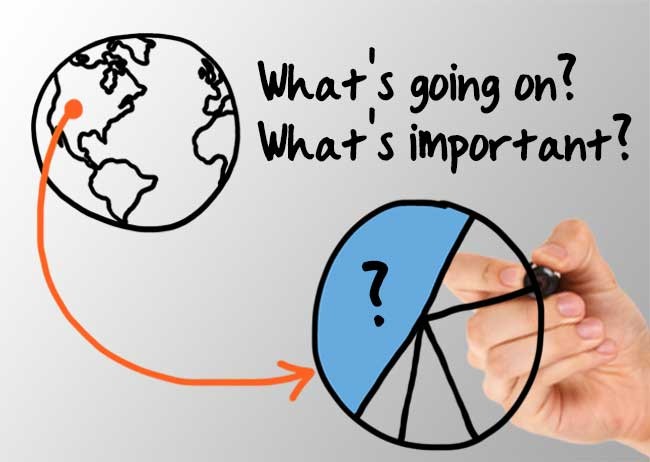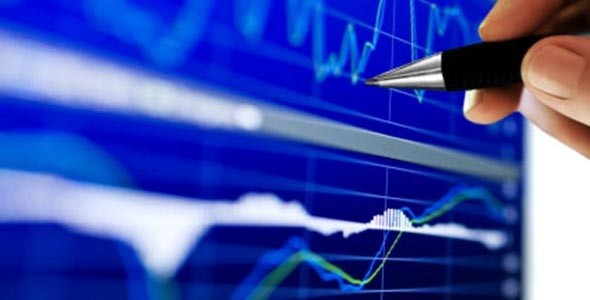Economic Indicators help investors know what to do
Post on: 28 Апрель, 2015 No Comment

Economic Indicators help investors know what to do
It is no news that our economy is not in the shape that we would all hope it to be in. On an almost daily basis, we are inundated with all kinds of economic data either pointing toward a double dip recession or an economic recovery. Without a basic understanding of how the economy works, it is easy to get confused and possibly scared about what the future holds. This article is intended to provide a refresher on the basics of economics in the context of today’s recession.
In an economy, there are consumers and producers. When consumers want goods and services, there will be producers who will satisfy consumers’ wants and needs in order to earn a profit. Without consumer demand, producers cannot sell their inventory and, therefore, will go out of business. While economists cite many different economic indicators, the ones that matter the most are the indicators that showcase consumer demand. They are housing starts, new-vehicle sales, retail sales, and consumer credit.
Housing starts represents the number of privately owned new housing units (single-family houses, townhouses, condos, and apartment buildings with five or more units) on which construction has been started in a particular month. New vehicle sales represent the sales data compiled by manufacturers on the sales of cars and light trucks (pick-ups, vans, and sport-utility vehicles). Retail sales represent merchandise sales for personal or household consumption, but does not include services such as dry cleaning, restaurant meals, or haircuts. Consumer credit represents dollar amounts of outstanding loans to individuals, which are used to purchase consumer goods. Real estate loans are not included in this number. Let’s analyze each indicator separately.
The following data represents housing starts from 2001 to the present.
Note: Monthly figures are annualized. All the numbers are in thousands; peak months are highlighted.
According to this data, on average, we built 1.6 million and 1.7 million housing units in 2001 and 2002, respectively. Note that the numbers are in terms of the annual rates of housing starts, and that this measurement is taken each month. Starting in November 2003, we built at a rate of 2 million housing units per year. In 2004, a similar rate of construction was repeated in March, August, October, and December. In 2005, almost every single month, except March and December, posted an annual rate of over 2 million housing starts. We made up the slack from these two months in January and February of 2006 by building at a rate of over 2.1 million housing units annually.
Life was good. Workers in the construction industry were living large. They were buying new cars, boats, and other luxuries. Banks were happy to extend credit to anyone with a pulse, driving real estate prices higher and higher. Real estate developers, seeing prices increasing, kept building. However, the party didn’t last forever. The following graph illustrates the downturn.
Note: Monthly figures are annualized. All the numbers are in thousands.
It can be seen that housing starts peaked in January 2006 at 2.3 million housing starts per year. While the economy was operating on all cylinders before the downturn, there was one problem – this wasn’t sustainable because there had to be actual demand for all these new houses being built. Real estate speculators, flippers, and other investors were not enough to sustain building over 2 million houses per year. Demand for new housing is determined by the annual increase in the number of households. It is logical – if we have no new households being formed, then we don’t need new housing. According to the U.S. Department of Commerce, we formed between 1.1 and 1.2 million new households each year from 2005 to 2008. It doesn’t take a genius to realize that building new housing units at a rate of 2 million per year is way too much. No wonder it didn’t last.
The amazing thing is that when we were building at a rate of 2 million houses per year, the media and the majority of experts were ecstatic about it because the economy was doing fabulous. Now these same people are pointing out that we are building only half a million of new housing units as indicated by the previous illustrations, and predicting that we are going to see a double dip recession because people don’t have jobs. While I agree that the current state of the housing market is terrible and keeps the economy from expanding, I do not think that building at a rate of half a million housing units per year is a bad thing. It was building at a rate of 2 million houses per year that got us into trouble because it wasn’t sustainable. With that being said, building at a rate of half a million houses per year is also unsustainable because our country still has household formation at a rate of 1.2 million per year. Once we burn though the excess inventory, the economy will need new housing and the construction industry will operate at more normalized levels. Building at a rate slower than the rate of household formation is a good thing for the future, but not so great for the economy today because construction workers are out of jobs. However, we have no choice but to be patient and wait. We cannot create households any faster.
The recovery in the housing starts will not happen overnight as many people hoped it would. It will take time. It is hard to predict whether it will be two, three, or even four years, but we are on the right path.
The second economic indicator for consumer demand is new vehicle sales. Similarly to housing starts, this indicator also provides evidence that our economy is in a recession.
Note: Sales figures are in millions; weak months are highlighted.
On average, consumers bought 17.1 million, 16.8 million, 16.9 million, 16.9 million, 16.5 million, and 16.1 million of new vehicles in 2001, 2002, 2003, 2004, 2005, 2006, and 2007, respectively. The downturn in new auto sales started in late 2007.
The sharp spike in auto sales in August 2009 was caused by the government’s help via the “Cash for Clunkers” program, which was a $3 billion economic incentive to U.S. residents to purchase new, more fuel efficient vehicles when trading in less efficient ones. The program started in July 2009 and ended in August 2009.
From the graph, it seems as if new vehicle sales might have bottomed in September 2009. October and November of 2009 showed continued progress in new vehicle sales. At this moment, it is hard to predict whether new auto sales figures will keep improving in the near future, but I believe that over a longer time frame they will improve. Based on historical numbers, we purchased close to 17 million new vehicles per year. In 2008 and 2009, instead of replacing our cars at this rate, we kept driving the cars we had and replaced them at a rate as low as 9 million per year. The longer we keep them, the older they get and more miles they clock. I wouldn’t be surprised to see auto sales spike significantly higher in the future because people can only defer new car purchases temporarily.
Retail sales have been increasing on a continual basis from January 2001 until May 2008 when they peaked.
Note: Sales figures are in millions. $300,000 represents $300 billion.

Retail sales bottomed in December 2008 at $329.8 billion. From the graph above, it seems as if retail sales are starting to recover, but they are still significantly below the May 2008 level of $370 billion.
Consumer credit, and more importantly, changes in consumer credit, represent an important economic indicator of consumer activity. It affects retail and auto sales because we finance many of these expenditures, especially cars, with credit. If credit became unavailable, not many people would be able to afford cars.
Note: Dollar figures are in millions. $2,000,000 represents $2 trillion.
Consumer credit has been rising on a continual basis until it peaked in July 2008 at $2.581 trillion. As mentioned previously, the total amount of credit outstanding is not as important as the change from month to month as shown in the table to the left.
A positive number in the “Change” column represents an increase in outstanding consumer credit. The first negative number occurred in August 2008 when consumer credit decreased from its peak of $2.581 trillion in July 2008 to $2.576 trillion in August 2008. The biggest decreases of outstanding debt occurred in November 2008, February 2009, March 2009, and April 2009. Consumers paid down over $10 billion of debt in each of these months (these months are highlighted). While it is good for individuals to carry less debt, it doesn’t help the economy because instead of spending money on goods and services, they are simply paying down debt. From July 2008 to October 2009, consumers paid down a total of almost $100 billion in debt.
Economists have been warning consumers for years not to take on so much debt, and finally, consumers have decided to deleverage. Banks and credit card companies helped with deleveraging by refusing to extend credit to many consumers.
From the table, it seems as if consumers are still reducing their debt burden, but they are doing so at a slower pace in comparison to the first quarter of 2009. While consumers and businesses chose to deleverage, the U.S. government decided to take on debt to stimulate the economy and keep from going into a depression. Whether the government’s efforts are actually working or not is the topic of another debate that is beyond the scope of this report.
Our economy is highly dependent on credit availability. As lenders become more comfortable with extending credit, consumers are likely to borrow. Unfortunately, our society is not taught to work for something and save, but to take on credit and buy today. In my opinion, this type of behavior is likely to continue into the future. As long as consumers can afford interest payments, they will borrow to consume today and when they return to doing this, the economy will benefit from it.
Our economy is dependent on consumer demand, which is best showcased by housing starts, new vehicle sales, retail sales, and consumer credit. All of these indicators underscore the fact that our economy is going through tough times. However, there are signs that the economy is on its way to prosperity. As an investor in commercial real estate or stocks, I want to focus on the future, and at the same time, take advantage of bargain prices today. Not many investors have the courage to invest in an uncertain environment, but this is exactly when bargains present themselves. Before the economic downturn, investors faced extreme competition from fellow investors when bidding for investments. They weren’t questioning the economy even though the economic indicators were clearly pointing to trouble. Now when they face almost no competition from other investors, they sit on the sidelines. As an investor, you either follow the crowd or think for yourself. The question is, “Which investor are YOU?”














